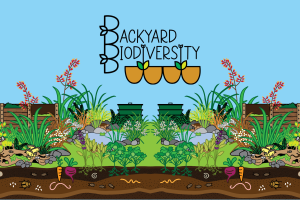Our approach
In this section
Giving people a voice
Achieving better environmental outcomes requires the support and engagement of all. A good starting point is to be open and inclusive when setting environmental goals and making related decisions. Hence, our research aims to empower practitioners, policymakers, advisors and advocates to decide which environmental outcomes matter most and the management actions relevant to achieving those outcomes. It catalyses a wider-ranging conversation than would have otherwise happened, with multiple benefits. This included finding some common ground, and agreeing on some short-term priorities, which can then act as a springboard for developing decision-support tools.
Learn more about how we are working with stakeholders from a diverse range of roles and interests to empower them to identify the priorities that are immediately relevant and useful to them:
Making wise of experts and evidence
Two persistent issues typically underlie poor environmental decisions: Researchers fail to deliver the evidence needed by decision-makers, and decision-makers fail to use the evidence delivered by science.
Our research highlights how ‘boundary-spanning’ teams can help address these challenges, it shows how:
- global evidence can be systematically tailored to meet local needs and plug local information gaps.
- the accuracy and reliability of biodiversity expert judgements can be enhanced.
Benefits arising from our approach include:
- mitigating the risks of a skewed assessment by one or two experts
- overwhelming experts with too many issues to debate
- conflicts arising from misunderstandings about action outcomes.
- Learn more about how we aimed to make our pilot study an inclusive, rigorous and transparent one: Journal article and Plain language summary in People and Nature
Designing tools for different audiences
Making evidence more readily accessible is critical consideration. It requires efficient and effective communication, tailoring information for diverse audiences. It also requires using appropriate channels to ensure potential users are aware of the available resources and know how to access and interpret them.
We have begun to address these challenges, through the development of the following tools, each tailored for different audiences:
- Environmental evidence database for Aotearoa - an interactive database that demonstrates how environmental evidence relevant to New Zealand’s environmental and social context could be made more readily accessible for practitioners, policymakers and researchers.
- Biodiversity assessment tool for NZ farms - an online calculator allows farmers to rapidly self-assess the expected biodiversity outcomes of their farming practices.
-
Power analysis package for improving evidence - the 'simr package' (on ’R’, an integrated suite of open-source software facilities that is widely used around the world] helps the user to assess the power of different study designs to detect trends or changes in monitoring data.
Improving uptake of tools
Our team saw the need for a new online tool to help farmers enhance biodiversity on their farms. However, our goal was not so much to build the tool (although we did that too) but to better understand how and why farmers might use the tool. This is tricky because the choices a farmer makes are influenced not just by themselves as individuals, but also the wider context in which they work. By examining the challenge from different perspectives (social psychology, behavioural economics, sociology and management) and integrating them, an enriched system-level understanding emerged. In this way, we laid the groundwork for co-creating an action plan to advance the tool development to empower farmers to enhance biodiversity outcomes.
- Journal article and Plain language summary in People and Nature
Highlighting pathways towards evidence-based decision-making
Failure to use scientific knowledge and evidence in environmental decisions results in wasted resources and poor sustainability performance. Data simulations using our biodiversity tool for NZ farms show how individual users can choose the best biodiversity management options for their own circumstances. They also highlight the penalties of failing to prioritise farm interventions and refine industry-wide biodiversity management targets in relation to socially licensing farming, encouraging investment and participation by all stakeholders, and securing sustainable food and fibre production. In effect, these simulations provide positive mental models that can help overcome evidence complacency in farm decision-making.
- Journal article in Environmental Challenges
- Research report highlights how the tool could also be used to evaluate wider environmental outcomes

